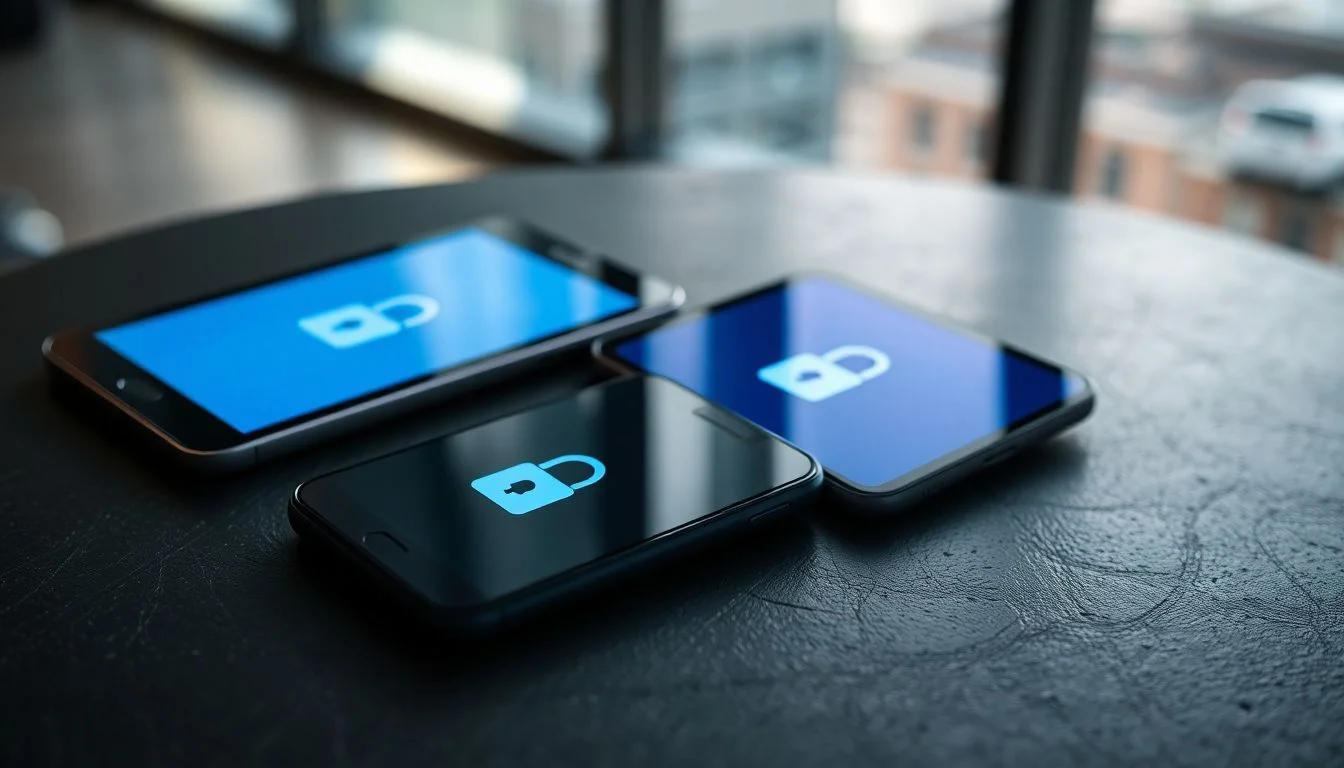Did you know that over 50% of mobile devices have unpatched vulnerabilities? This alarming statistic underscores how exposed our personal information can be if we don’t take mobile security seriously. With the rising number of transactions and communication happening through smartphones, the chances of cyber threats are also soaring.
As we increasingly rely on mobile devices for everything—from banking to social media—it’s crucial to understand the security risks involved. This article aims to provide a comprehensive guide on safeguarding your mobile devices from potential threats.
Secure Your Mobile Operating System
Update Your OS
Keeping your device’s operating system up to date is vital. Regular OS updates patch known vulnerabilities, helping to shield your device from threats. In fact, studies show that 60% of security vulnerabilities are fixed in software updates. To enable automatic updates:
- iOS: Go to Settings > General > Software Update > Automatic Updates, then toggle it on.
- Android: Open Settings > System > Advanced > System Update > Automatically check for updates.
Enable Automatic Security Updates
Taking further steps to secure your device is easy. Enabling automatic security updates means you won’t miss critical patches.
- iOS: Follow the same steps above for Automatic Updates.
- Android: Go to Settings > Security > Google Play system update > Enable automatic updates.
Use a Strong Passcode/Biometrics
A strong passcode is your first line of defense. Use a combination of letters, numbers, and symbols to create a complex password. Additionally, biometric authentication (like fingerprint or facial recognition) offers extra security. Weak passwords can easily be hacked, putting your data at risk.
Strengthen Your Mobile App Security
App Permissions
Reviewing app permissions is essential. Many apps request access to data unrelated to their purpose. Revoking unnecessary permissions can save your data from malicious use. For example, a seemingly harmless flashlight app may ask for your location, which is unnecessary.
Download from Official App Stores
Always download apps from official sources like Google Play Store or Apple App Store. Third-party sources can host malicious apps that compromise your data. According to cybersecurity experts, downloading apps from unofficial sites can lead to malware infections.
Keep Apps Updated
Just like your OS, apps need updates too. Outdated apps are often targets for hackers. Enable auto-updates in your app store settings:
- iOS: Go to Settings > App Store > App Updates > Toggle to On.
- Android: Open Google Play Store > Menu > Settings > Auto-update apps.
Protect Your Mobile Data & Privacy
Use a Strong Password Manager
Password managers help you create and store strong, unique passwords for each account. Popular options include LastPass, 1Password, and Bitwarden. They add an extra layer of security to your online accounts.
Enable Two-Factor Authentication (2FA)
2FA requires a second form of identification beyond just your password. This adds an extra safety net. You can enable 2FA for platforms like Google, Facebook, and banking apps. Look for the security settings in your account.
Avoid Public Wi-Fi
Public Wi-Fi networks can be a goldmine for hackers. Avoid using them for sensitive transactions. If you must connect, use a virtual private network (VPN) for added security.
Safe Browsing & Phishing Prevention
Recognize Phishing Attempts
Phishing scams often come via email or text message, tricking you into revealing personal information. Common techniques include fake links and urgent requests for sensitive data. Always verify the sender before clicking.
Be Cautious of Suspicious Links and Attachments
Never click on unknown links or download attachments from untrusted sources. Cybercriminals use these tactics to spread malware. According to cybersecurity statistics, nearly 90% of breaches start with a phishing attack.
Use a Reputable Antivirus App
Mobile antivirus apps can help detect threats and provide real-time protection. Look for well-known options, such as Norton, McAfee, or Bitdefender, to keep your device secure.
Safe Mobile Device Management
Regularly Back Up Your Data
Backing up your data can help you recover critical information in case your device gets lost or damaged. Use cloud services like Google Drive or iCloud for automatic backups.
Locate Your Device Remotely
If your mobile device goes missing, you can track it down using built-in features. Use:
- iOS: Find My iPhone
- Android: Find My Device
Both tools allow you to locate and even remotely wipe your data for security.
Consider a Mobile Device Management (MDM) Solution
For businesses or individuals with multiple devices, using an MDM solution helps streamline security measures across all devices. This kind of management provides an easy way to enforce security policies.
To ensure your mobile devices remain safe, remember these key practices: regularly update your operating system and apps, use strong passwords and 2FA, and be cautious of public Wi-Fi and phishing attempts.
Implementing these security measures can significantly reduce the risk of data breaches and identity theft. Protect your mobile devices today to enjoy peace of mind in an increasingly connected world.





